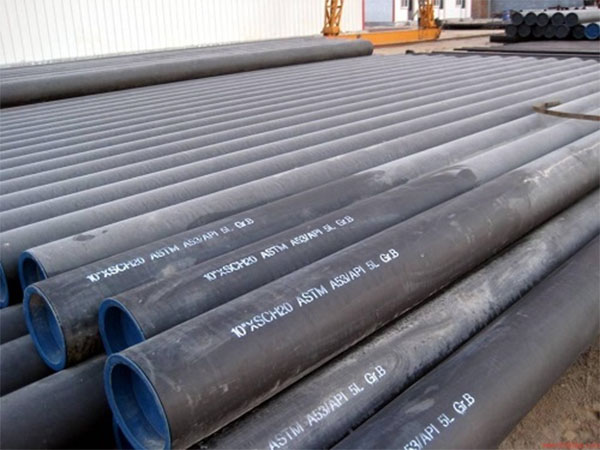
Specifications, dimensions and forms
Heat treatment and quality control
The main chemical components of A53pipe
|
Grade |
Chemical Composition (%) Max. |
||||||||
|
|
C |
Mn |
P |
S |
Cu |
Ni |
Cr |
Mo |
V |
|
A |
0.25 |
0.95 |
0.05 |
0.045 |
0.4 |
0.4 |
0.4 |
0.15 |
0.08 |
|
B |
0.3 |
1.2 |
0.05 |
0.045 |
0.4 |
0.4 |
0.4 |
0.15 |
0.08 |
Main mechanical properties:
|
Grade |
Mechanical Properties, Min. |
|
|
|
Tensile Strength(Mpa) |
Yield Strength(Mpa) |
|
A |
330 |
205 |
|
B |
415 |
240 |
Typical application scenarios
Municipal and construction: Water supply and drainage pipes, HVAC (Heating, Ventilation and Air Conditioning) pipelines, scaffolding supports
Mechanical manufacturing: Hydraulic props, structural frames, equipment load-bearing pipes
Energy transmission: Medium and low-pressure steam, water and gas transmission pipelines
Fire protection system: indoor and outdoor fire sprinkler pipes, main fire hydrant pipes
Comparison with seamless pipes
ERW pipes are formed by resistance welding of steel strips and have the advantages of low cost, high production efficiency and diverse specifications. They are suitable for general structures and medium and low pressure fluid transportation. Seamless tubes, on the other hand, are formed by hot rolling or extrusion of steel ingots, featuring a more uniform structure and higher strength. They are more suitable for high-pressure or critical fluid applications. Despite their higher cost, they perform more stably and reliably in high-demand environments.
A53 ERW carbon steel pipe, with its cost advantage and wide range of specifications, is a common preferred pipe type in pipeline engineering.